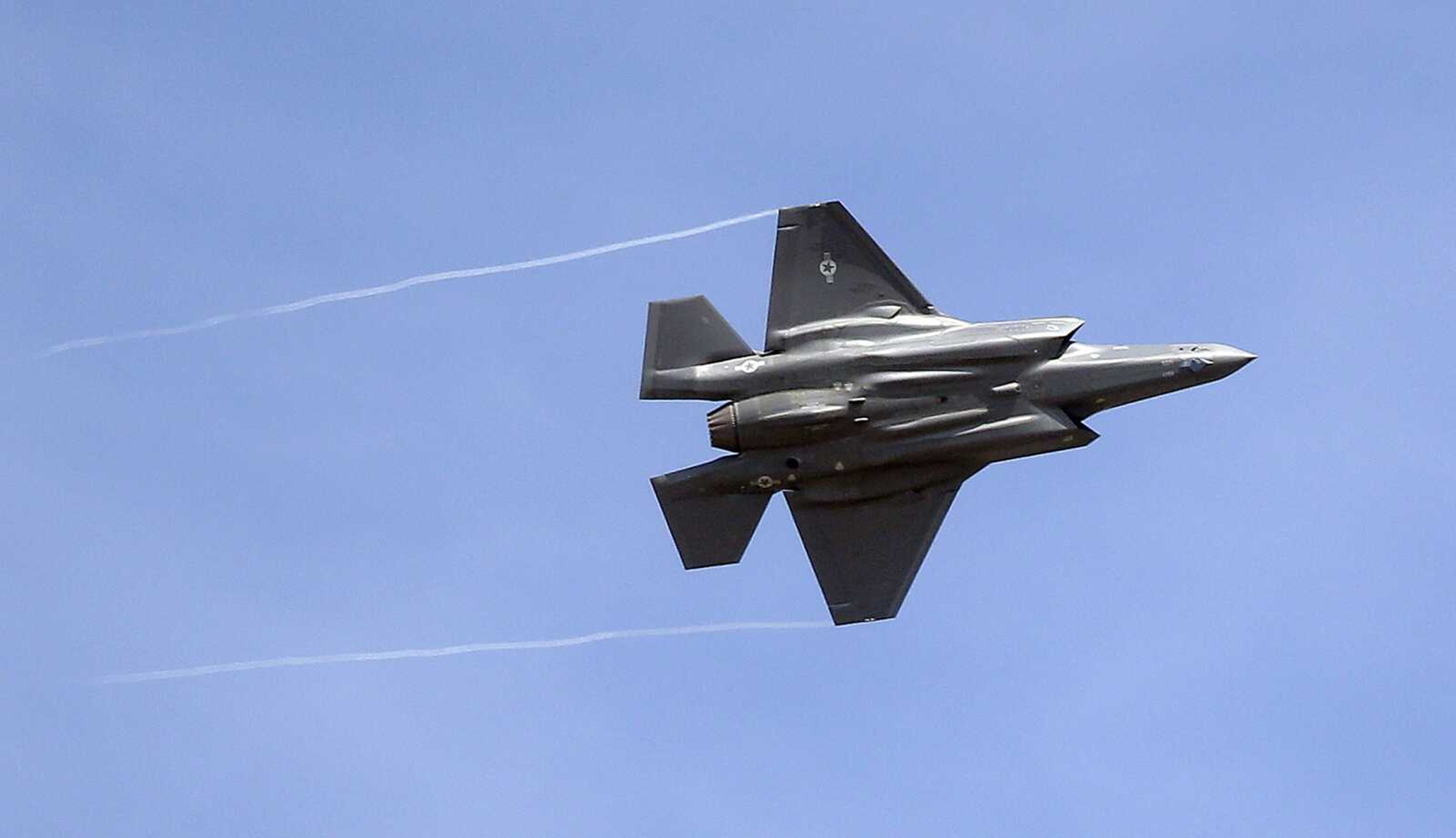Trump targets F-35; aircraft means jobs in 45 states
WASHINGTON -- President-elect Donald Trump is vowing to corral the "out of control" cost of the F-35 Joint Strike Fighter. But congressional Republicans and Democrats, aware of the tens of thousands of jobs the aircraft generates in 45 states, will be wary of any plans by Trump to cut the program...
WASHINGTON -- President-elect Donald Trump is vowing to corral the "out of control" cost of the F-35 Joint Strike Fighter.
But congressional Republicans and Democrats, aware of the tens of thousands of jobs the aircraft generates in 45 states, will be wary of any plans by Trump to cut the program.
A Monday morning tweet from Trump targeting the F-35 doesn't explain how he'll save billions of dollars in military purchases while honoring a campaign vow to rebuild the armed forces.
Once Trump is in office, he can propose deep cuts to the F-35 or elect to cancel the program altogether.
But Congress, not the president, controls the government's purse strings and makes the final decisions about the budget.
Built by defense giant Lockheed Martin, the nearly $400 billion price tag for the F-35 makes the program the Pentagon's most expensive weapons acquisition.
Despite the huge cost, the program has bipartisan support in Congress, where lawmakers view the aircraft as essential to national security.
After Trump's tweet, Lockheed Martin's shares tumbled, wiping out nearly $4 billion of the company's market value.
The F-35 program made up 20 percent of Lockheed's total 2015 revenue of $46.1 billion.
U.S. government orders made up 78 percent of its revenue last year.
"Whoever has this airplane will have the most advanced air force in the world. That's why we're building the F-35. That's why it's important to not only the U.S., our partners and our partners like the Israeli Air force to have this airplane," said Jeff Babione, general manager of the F-35 program, at a base in Israel.
Israel and several U.S. allies also are buying the F-35, expanding the program's international footprint.
Defense Secretary Ash Carter visited Israel on Monday as Tel Aviv received the first two next-generation F-35 fighter jets that will help preserve the country's military edge in the volatile Mideast.
The F-35, which uses stealth technology to avoid being detected by radar, is being built in different configurations to be used by the Air Force, Navy and Marine Corps. The Navy's version, for example, is designed to take off and land on an aircraft carrier.
Current plans call for the United States to buy nearly 2,500 F-35s.
Close to $13 billion will be needed annually between 2016 and 2038 to hit that procurement number, according to the Government Accountability Office.
While the F-35 had budget overruns early, the cost has stabilized and dropped a bit after tough negotiations between the Pentagon and Lockheed Martin, according to Todd Harrison, a defense budget expert at the Center for Strategic and International Studies.
"Trump is unlikely to squeeze more blood out of this rock," Harrison said.
Lockheed said it has worked to lower the price of the F-35 by 60 percent and expected the aircraft to cost $85 million each in 2019 and 2020.
But the company's estimate appears to omit the price of the engine and the cost of development.
When those elements are added, the cost per F-35 in current-year dollars is closer to $138 million, according to Harrison.
Companies from 45 states are involved in the F-35's production, with Texas, Georgia, California, Arizona and Florida playing leading roles in testing and manufacturing the jet fighter.
The company is teamed with more than 1,250 domestic suppliers to produce thousands of components ranging from sophisticated radar sensors to parts of the aircraft's fuselage, according to Lockheed Martin.
Overall, the F-35 program is responsible for more than 146,000 U.S. jobs, the company said.
The Lockheed Martin plant where the F-35 is being built is in Texas Republican Rep. Kay Granger's district. She's vice chair of the defense appropriations subcommittee.
Rep. Mac Thornberry, the Republican chairman of the House Armed Services Committee, represents the district next door to Granger's.
Connect with the Southeast Missourian Newsroom:
For corrections to this story or other insights for the editor, click here. To submit a letter to the editor, click here. To learn about the Southeast Missourian’s AI Policy, click here.









